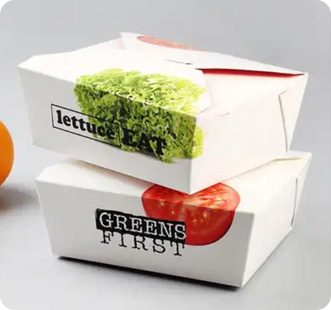
In the fast-paced world of food packaging and consumer goods, PE coated paper has become a quiet hero behind the scenes. If you’ve ever held a coffee cup that didn’t leak, or eaten a burger from a box that stayed dry and intact—congratulations, you’ve likely benefited from PE coated paper. But what exactly is it? How does it work? And why are PE coated paper boxes so widely used?
What Is PE Coated Paper?
PE stands for polyethylene, a lightweight, flexible plastic. When a thin layer of polyethylene is applied to one or both sides of paper, it creates a barrier-coated material. This barrier enhances the paper’s resistance to water, oil, grease, and other moisture-related elements.
There are two types of PE coating processes:
Single-side PE coating (SPE) – PE layer is applied only to one side.
Double-side PE coating (DPE) – PE layer is applied to both sides of the paper.
This coating is done using specialized extrusion machines, where melted polyethylene is pressed onto the paper’s surface and quickly cooled. The result is a smooth, slightly glossy surface with enhanced durability and water resistance.
What Is a PE Coated Paper Box?
A PE coated paper box is a packaging container made from this special laminated paper. It looks like an ordinary paper box—but it’s leak-proof, oil-resistant, and structurally stronger, which makes it ideal for packaging hot, greasy, or moist foods.
PE coated boxes are most commonly found in:
Burger boxes
French fry boxes
Take-out meal containers
Chinese food boxes
Paper coffee cups
Dessert and pastry trays
These boxes are usually formed on automatic paper box forming machines(such as ZX-550/550S), designed to handle coated paper without compromising the PE layer's integrity.
Why Use PE Coated Paper?
The benefits of PE coated paper are practical and important:
|
Benefit |
Explanation |
|
Waterproofing |
Prevents liquid penetration, essential for drinks and juicy food items. |
|
Oil Resistance |
Keeps packaging clean when dealing with fried or oily foods. |
|
Heat Resistance |
Tolerates hot contents like burgers and soup. |
|
Structural Strength |
PE adds stiffness, making boxes more crush-resistant. |
|
Printability |
Accepts high-quality printing, even after coating. |
But What About the Environment?
A major concern today is sustainability. Traditional PE coated paper is not compostable or easily recyclable unless properly treated. However, there are developments toward:
Biodegradable PE alternatives like PLA (Polylactic Acid)
Water-based coating or wax alternatives
Recyclable PE coating technologies (though rare in general waste processing)
Responsible manufacturers are looking into these alternatives to reduce the environmental footprint of coated papers.
Manufacturing and Machinery
To manufacture PE coated boxes, two key steps are involved:
Coating Process: Paper rolls are fed into a coating machine, where a thin layer of PE is laminated onto the surface.
Box Forming: Coated paper is then cut and sent through automatic forming machines, such as:
Burger box forming machine
Double station box forming machine
Noodle box forming machine
Pizza box semi-auto line
Machines that handle PE coated paper need precise heat control, anti-stick molds, and smooth paper feeding systems to avoid damaging the coating.
Final Thoughts
In summary, PE coated paper is a powerful material that brings together the simplicity of paper and the functionality of plastic. It plays a vital role in the modern food service and fast food industry, delivering clean, convenient, and reliable packaging solutions.
Whether it’s a grease-resistant burger box or a coffee cup that doesn’t leak, PE coated paper is one of those innovations we rarely think about—but can’t live without.
GET A QUOTE
+86-13780131993